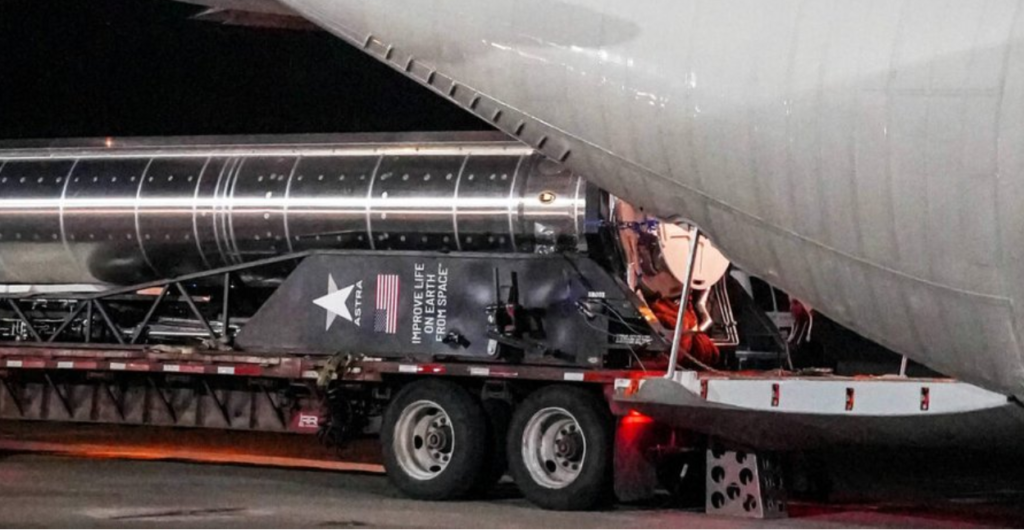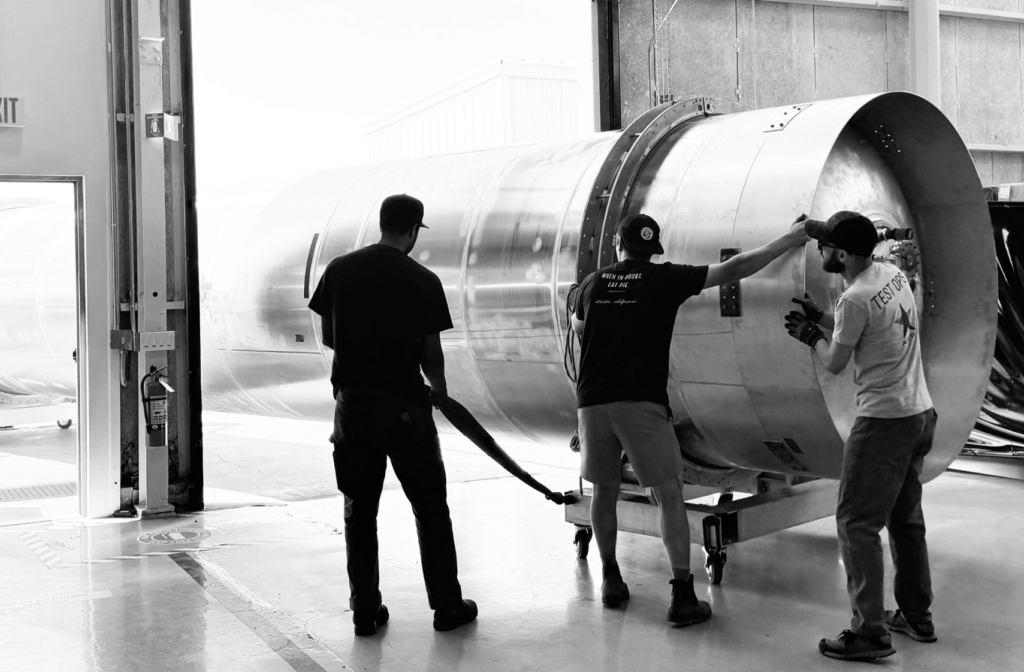Astra Space has had a bit of a rocky history but is still making progress toward the launch of its new rocket. Just days ago they announced a new $44 million contract from the Department of Defense, supplying crucial funding to the company.
At the same time we are watching different test campaigns take place with Rocket 4 hardware and test articles. As of right now, the company is targeting a maiden flight of this new vehicle by the end of 2025. Here I will go more in-depth into the new contract, what upgrades the company is making, recent progress, and more.
New Contract

Astra Space has had a unique history in that they used to launch rockets somewhat frequently before stopping entirely. Toward the middle of 2022, the company canceled its Rocket 3 line after a 6th failure. Even though this vehicle was able to reach orbit more than once, they knew they needed a system that could keep launching without issues.
With this came the shift to Rocket 4 and Launch System 2.0. Rocket 4’s first-stage architecture uses much of the same architecture from Rocket 3.3, with two key updates intended to dramatically improve performance and manufacturability. First, the domes are now stamped directly from single sheets of aluminum, reducing weight and streamlining overall manufacturability – which in turn is meant to reduce launch costs.
The second is the engine change. Multiple failed missions in the past had to do with the upper stage architecture. Whether the issue was the second stage engine, fairing deployment, etc, it had some consistent problems. That’s exactly why the upper stage has undergone the largest architectural change from Rocket 3.3. Rocket 4’s upper stage has moved to a full-diameter, common dome design, meant to increase build reliability and decrease total manufacturing costs.
These upgrades and changes however come with a price. Fortunately for them, earlier this month on the 23rd they tweeted saying, “Department of Defense awards Astra contract valued up to $44 Million.” Within the provided statement they say, “The contract supports advancing and scaling the production capabilities of Astra’s unique tactically responsive launch system, to achieve the prototype objective of launching Rocket 4 to orbit or suborbit and from the US, Australia, or other locations.”
The Founder and CEO of Astra Chris Kemp said, “This award is a testament not only to our team’s perseverance this past year, but also a validation of our vision for tactically responsive space. We’re proud to have so many partners who understand and support the importance of point-to-point space delivery for national security and defense applications” he said.
To put in perspective some of the financial issues the company was running into, late last year, Astra disclosed in a securities filing that it defaulted on a debt agreement and may not be able to raise the needed cash. Specifically, Astra revealed that it had triggered a default on a $12.5 million loan it secured in August from an unnamed institutional investor when its cash on hand fell below minimums required by the loan agreement.
This new DoD funding should have a significant impact on the company’s ability to continue the test campaign if not ramp it up. In another quote, the Founder and CTO of Astra Adam London said, “This is a major vote of confidence in Astra and the continued development of Rocket 4 and our next gen launch system. We are honored to partner with the DIU as we bring Rocket 4 to market with a renewed focus on reliability and scale.”
A few months ago in August, they tweeted saying, “A Rocket 4 first stage tank returns to the factory after passing qualification testing. This qualification confirms that the primary structure of Rocket 4 can withstand stress and loads far beyond those seen in flight and is a major milestone in the overall launch system design.”
This is just one example of some of the testing they’ve been completing. In 2023, starting in January, they performed a pressure test on a new tank design. Test Tank 1 met all testing objectives and allowed the team to move into qualification tank builds of both the first + upper stage which now shares a common size. Then that same month Astra announced the Rocket 4 first stage engine completed a full mission duty cycle of 175 seconds. Lastly, in March, they completed the first hot fire using the thrust vector control (TVC) system for Rocket 4’s first stage engine. The TVC is the mechanism that allows them to control the direction of the thrust for the rocket used by the Guidance Navigation Control (GNC) systems.
Rocket 4

After some of the failures Astra experienced, they determined that the issue was not just the launch vehicle. The company’s original goal with Launch System 1 was to achieve orbital capability as quickly as possible and demonstrate that they could mass-produce rockets. They ended up doing that, however, most of the mass-produced rockets couldn’t make it to orbit. This is why we are also seeing a shift toward Launch System 2.
In a quote, Astra said, “We believe Launch System 2 will provide Astra’s customers the launch services they need, whether that be constellation deployment, constellation management, or responsive missions. Dedicated small launches give satellite operators the ability to deploy their spacecraft directly to their operational orbits and allow them to start providing services and adding value sooner. While Launch System 1 made Astra the fastest privately funded U.S. company to reach orbit, the goal of Launch System 2 is to build a highly reliable system that we believe can scale to a weekly launch cadence” they said.
Unlike many other companies within the space industry, rather than completely switch or begin working on a larger rocket, Astra is sticking to small launch. One of Astra’s core values is “simple scales”, and that is reflected in the goal to develop an easy-to-deploy, mobile launch system. Since the last mission, the ground system has undergone several impactful updates that simplify the system and support scaled launch operations. It has first been optimized for improved site turnaround: critical systems have been moved from the launcher into two easy-to-access containers on the launch site, shielding critical components and simplifying maintenance between launches.
Second, it’s been designed for mobility: despite the overall size increase of the rocket, the launcher and rocket are still designed to fit within standard-sized shipping containers, ensuring that Astra’s launch system remains easy to deploy by land, sea, or air. Finally, it’s been designed for automation: Launch System 2 uses sensors and valves that can detect issues and “report back” to launch operators in real time, flagging anomalies in the system and mitigating issues through early detection. A system trying to avoid a high rate of failure seen in the past.
Astra also highlights that while the new launch system builds on the heritage of Launch System 1, Launch System 2 is more than just upgraded hardware – it represents a cultural shift from their primary focus on schedule to a focus on reliability. This launch system is the result of a significant change in how Astra designs, builds, qualifies, and operates its launch system. While Launch System 1 began its initial development with just a handful of people in a garage six years ago, Launch System 2 is being designed by teams of world-class engineers in a 225,000 sq. ft. manufacturing and testing facility.
As for the rocket, when complete, Rocket 4 will stand 62 feet from tip to tail, with a total diameter of 72 inches. This overall size increase will allow the vehicle to carry greater volumes of propellant, and in turn, deploy significantly more payload mass – with a target payload capacity of 600 kg to mid-inclination 500 km low Earth orbit over the course of the product lifecycle. With this size increase comes a bigger fairing as well. Rocket 4’s increased diameter provides a dramatic increase in the volume available for their customers’ spacecraft.
In addition to the development of the rocket, there was a lot of talk surrounding the factory and changes made to the manufacturing process. Astra calls it the Rocket Production line. Kemp commented, “It takes a coil of aluminum on one side of the building and it processes it through various stages and rocket stages come out the other side of the machine. This will allow us to drive the cost of the primary structure of the vehicle down like gigafactory presses drive the cost of the vehicle down, literally pressing primary structures out of sheets of metal and taking rolls of metal and turning them into the tanks of the vehicle” he said. This new system will be applied to Rocket 4 and is said to be capable of producing up to 1 rocket per day.
They also announced that they doubled the capacity of their shop, built new test stands, a quality control lab, and are testing engines much more. As for the timeline, back when Astra revealed the new Rocket 4 launch vehicle, they stated that test flights would begin in 2023. In regard to this, at the time Chris Kemp said, “The team knows how critical that we return to the pad and test this system, so we are working tirelessly to drive towards test flights by the end of the year.” However, he proceeded to talk about the company’s new focus on success rather than schedule. By now it seems they have begun working toward a more conservative launch estimate.
Conclusion
Astra Space was recently able to secure some significant funding thanks to a new Department of Defense contract. With this, they plan to continue making progress both on Rocket 4 and Launch System 2.0.
